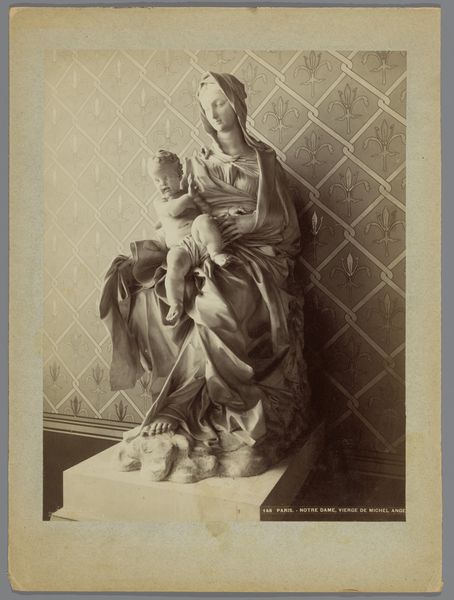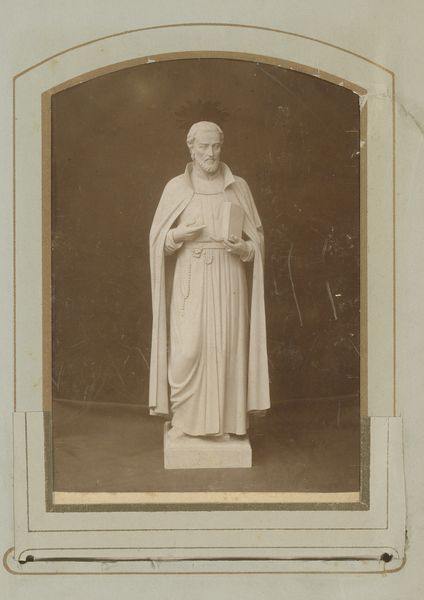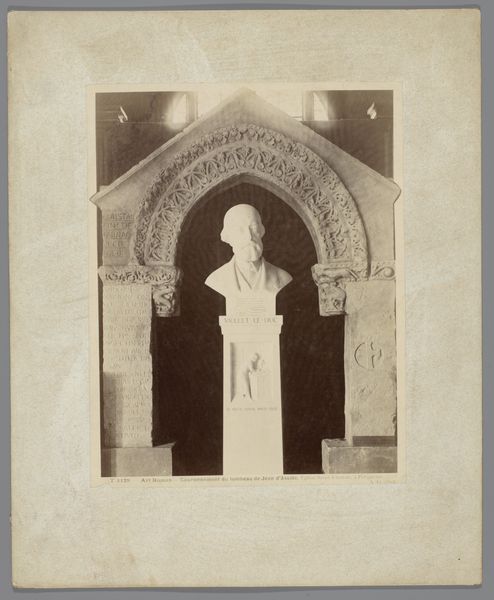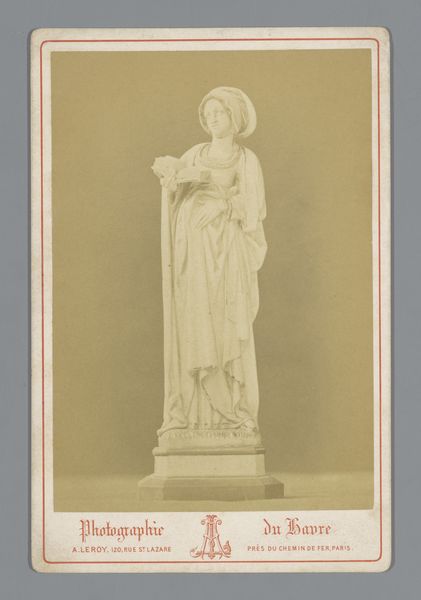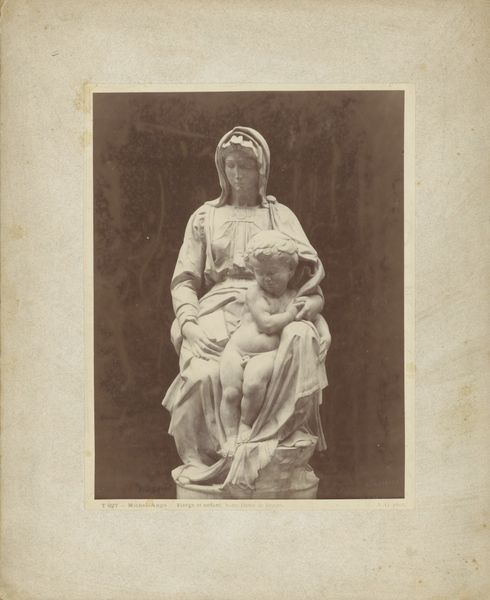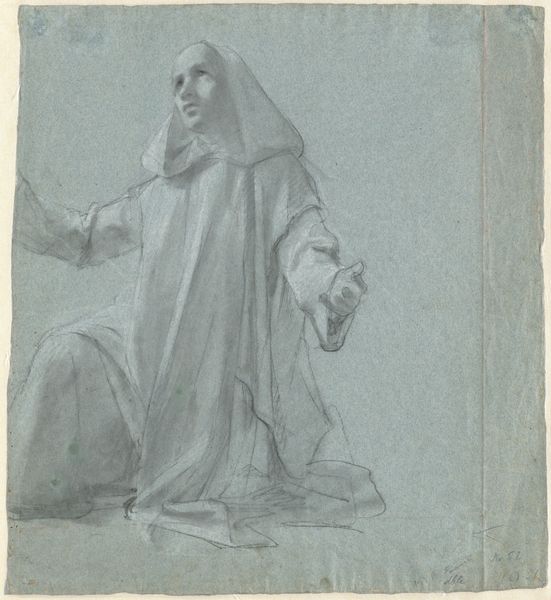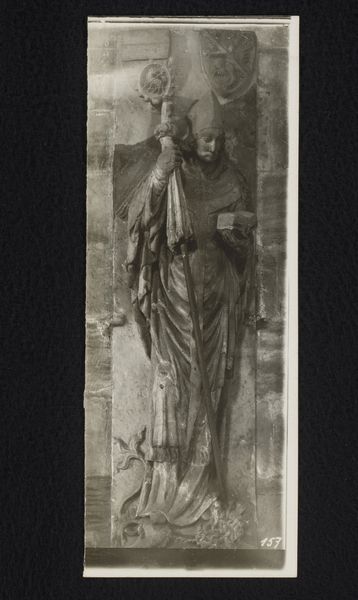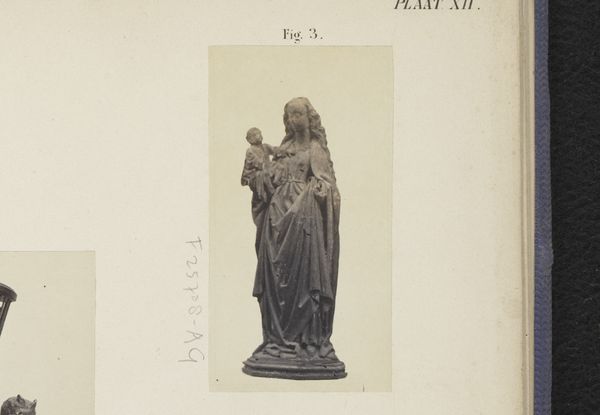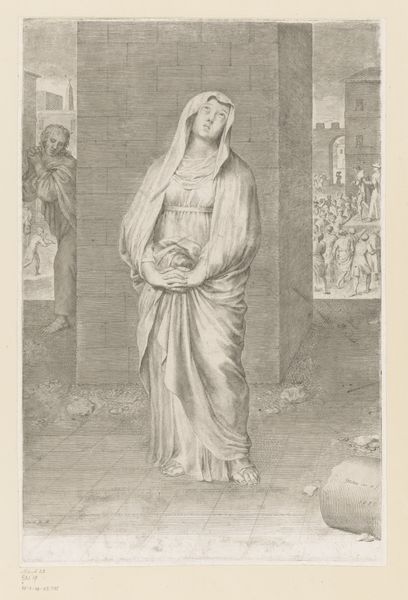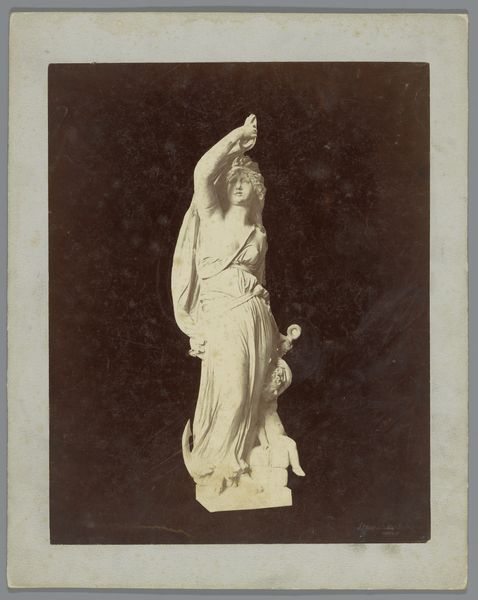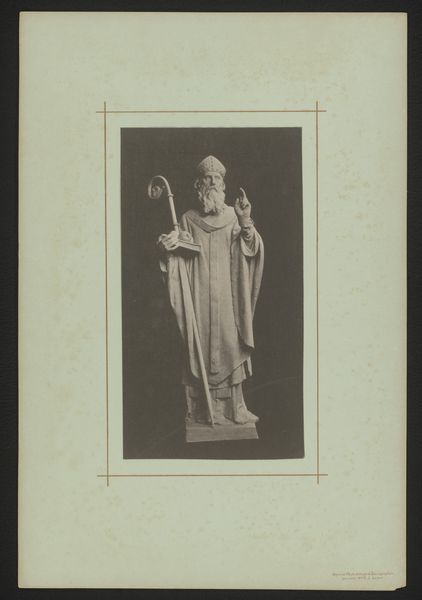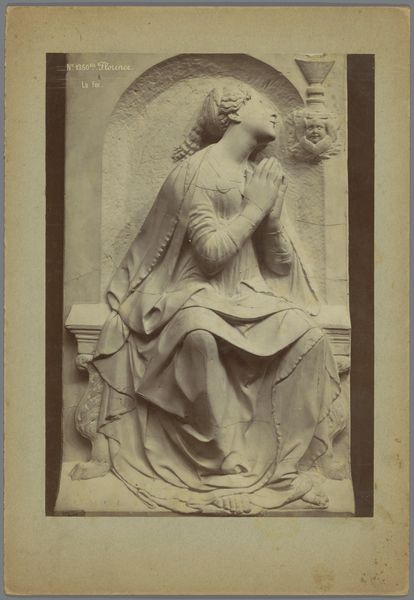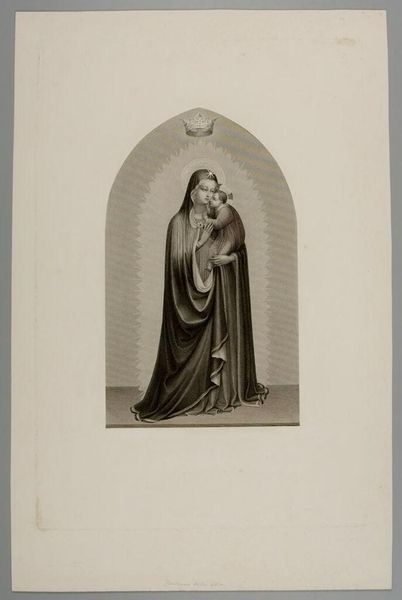
Afgietsel van een beeld van een vrouw als in het stadhuis te Neurenberg 1850 - 1900
0:00
0:00
medericmieusement
Rijksmuseum
Dimensions: height 499 mm, width 357 mm
Copyright: Rijks Museum: Open Domain
Curator: This photograph, taken sometime between 1850 and 1900 by Médéric Mieusement, is catalogued as "Afgietsel van een beeld van een vrouw als in het stadhuis te Neurenberg," which translates to "Cast of a statue of a woman as in the town hall of Nuremberg." It resides here at the Rijksmuseum. Editor: Immediately, the starkness strikes me. The muted tones, the figure’s veiled head – there's a definite mood of solemnity, almost austerity, about this piece. It really gives you an insight of life at that time period, where the figure of a woman had to be almost holy and pure. Curator: I agree. This photograph serves as a copy of a copy, and hints at the enduring influence of Neoclassicism. We see this translated not just in sculpture but echoed and re-echoed through photography, as if each reproduction intensifies a sense of timelessness, preserving not just an image, but a particular kind of feminine virtue for posterity. Editor: And how this kind of image shaped perceptions. The woman is shrouded, almost anonymous. The focus isn’t on individual identity but on her symbolic value. I can already hear the critics who believed that she was supposed to be portrayed that way; quiet, respectful and gentle. It really does speak volumes about 19th-century expectations surrounding women and ideals about femininity. Curator: Indeed. And if we accept her hood not as an act of female submissiveness, what symbols are being portrayed here for future cultures and for ourselves? Perhaps this photograph presents us not just a woman but with an emblem of stoicism? There’s a subtle psychological complexity present here despite the work being still a photograph. The hands clasped... is it reverence? Or suppressed resistance? Editor: Those hands... It really adds layers to the discussion, doesn't it? But it does challenge viewers to think beyond simple, inherited narratives about this photograph of womanhood in the mid 1800's and towards something perhaps even less definite than we imagined. Curator: A valuable point to make! Thank you for that, truly. I believe we have just discovered something rather grand ourselves! Editor: Absolutely, thank you. It just goes to show how artworks, regardless of age and history, are still as relevant as the present to engage and explore intersectional narratives that question the world we live in.
Comments
No comments
Be the first to comment and join the conversation on the ultimate creative platform.
